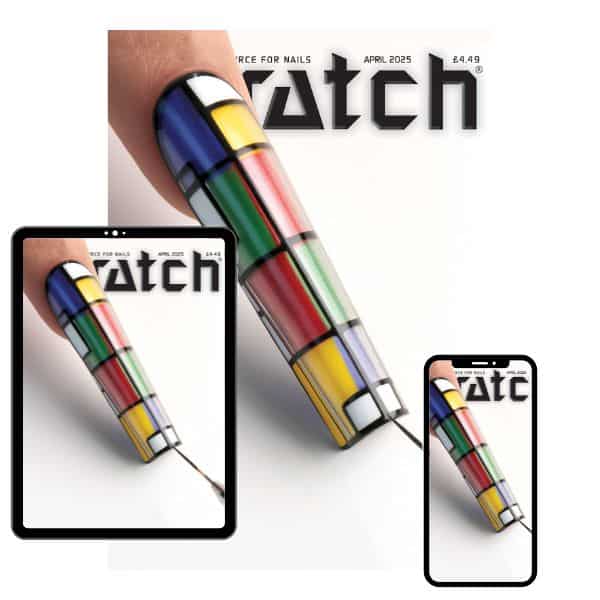
Sussex nail tech: How I navigate epilepsy to keep offering nail services
By Scratch Staff | 26 March 2025 | Feature, Health & wellbeing, Tech Talk
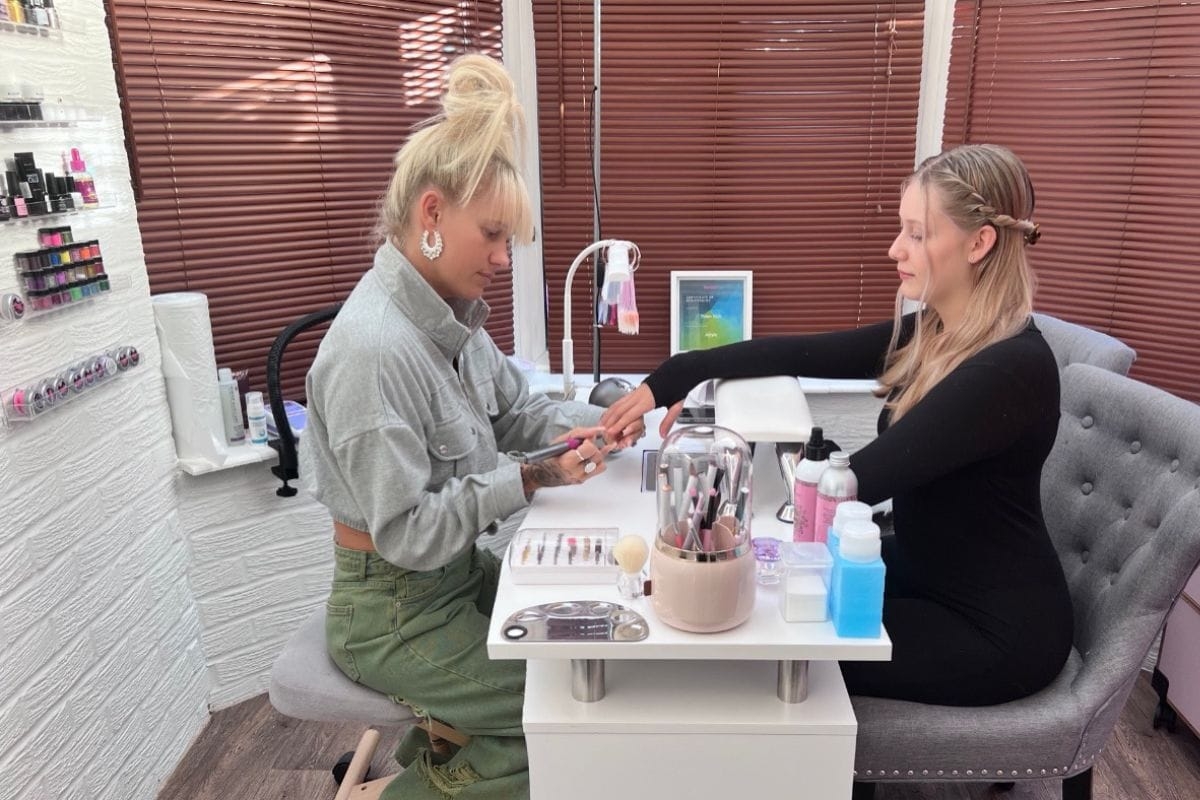
Dawn Wolk has huge adoration for the nail industry. It gives her independence and a sense of self-worth – but regular seizures mean she can only accommodate two clients per day.
The East Sussex nail pro, who attained an L&P acrylic nail qualification in February 2023, suffers with epilepsy and has Ehlers-Danlos Syndrome, which affects her connective tissue. This means she can’t work full-time in the industry, and only offers nail services to people she knows well who support and understand her health needs.
 Her epilepsy diagnosis came in 2003, after she awoke from an operation and started seizing. “The condition has taken away my control and confidence,” Dawn shares. “It limits what I can do, which is very frustrating.
Her epilepsy diagnosis came in 2003, after she awoke from an operation and started seizing. “The condition has taken away my control and confidence,” Dawn shares. “It limits what I can do, which is very frustrating.
“The most common seizures I have are tonic-clonic seizures, where I lose consciousness and my body shakes. About 30 seconds before a seizure, I get a blinding pain behind my eyes and am fearful about what will happen. Afterwards, I feel exhausted, confused, scared and sore, and I must sleep. I also have absence seizures, which last around 30 seconds and can happen upwards of 50 times on a bad day. While I quickly recover, if this type of seizure happens while I’m creating a nail design, I can momentarily forget what I’m doing.”
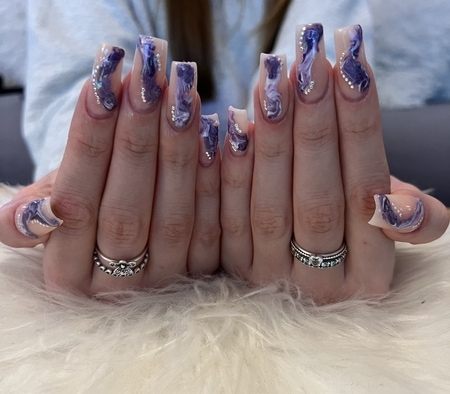
It is thanks to the support of her family members, and especially her husband, Darren, that Dawn can do what she loves – even if it’s not as regularly as she would like. “When I was training, I worked from a small table in my lounge, then Darren converted the conservatory into a nail salon,” she reveals. “He chose this as it means I am visible to him, yet my clients and I have privacy, and I can keep my independence.
“I have a high back padded chair with arm rests that reduces the risk of me falling onto the floor during a seizure, and shelves are kept away from the nail desk so I don’t bang my head,” Dawn continues. “There is an alarm that clients or I can press if I’m about to have a seizure, which makes a loud noise to alert my husband – who is always close by. There is also a camera in the room, so he can check on my wellbeing. My clients know how to tell if I am having a seizure, and help create a relaxed atmosphere for me.”
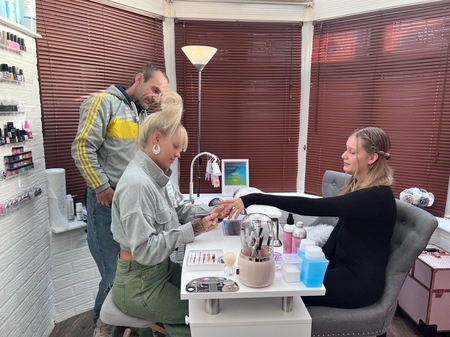
Darren comments: “Dawn’s epilepsy has limited the type of work she can do, but I encouraged her to pursue nails as I witnessed her talent and creativity. I saw how relaxed and happy she was when doing her own nails, so made sure she was safe at home to do what she loves with her clients. I worked in the building trade and acquired some skills that helped me to renovate the conservatory in around four days. I needed Dawn to be visible to me, so that I can ensure her safety if she seizes.”
The tech was keen for the salon to be inviting to clients, so she and Darren painted it white, and it features blush pink and grey accents.
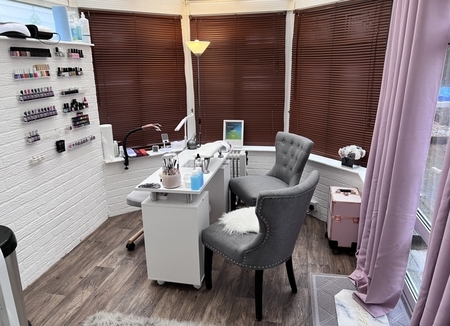
“Dawn never complains, even when she’s in agony, and does everything possible to make others happy,” Darren smiles. “She had always wanted to be a nail technician, so it was important to me to make that dream come true for her. I wanted the world to see her talent – and for Dawn to be happy.”
If her health improves, Dawn hopes to take on more clients. “I’d also like to enter nail competitions and expand my skillset so I can offer more services,” she shares. “Nails make me feel good about myself.”
Dawn’s top tips
For pros with epilepsy:
- “Know that epilepsy doesn’t define you. If you’re willing to put in the work, you can achieve your dreams – perhaps in a slightly different way.
- “Don’t be scared or embarrassed to talk about the condition. Educate others, including clients. This will reassure them and ensure they enjoy their experiences.
- “Don’t put too much pressure on yourself and allow time for breaks, as stress can be a trigger for seizures.”
For accommodating an epileptic client:
- “Communicate openly with the client, asking about their triggers and what you can do to make sure they are as safe as possible, such as taking a break.
- “Make sure your work environment is relaxing and comfortable.
- “People with epilepsy might bring someone with them to their appointment, in case of a seizure, so ensure they can accommodated. If the client is alone, make note of their emergency contact.
- “If the client has a seizure, remain calm and call their emergency contact or if unavailable, an ambulance. Familiarise yourself with basic seizure first aid, which includes not restraining the person and moving anything that could be a hazard.
- “Consider using manual files rather than an E-file, to reduce the chance of injury if the client has a seizure.”

Read the latest issue
